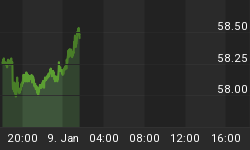
The Dow Jones Industrial Average was first calculated on May 26, 1896. Therefore the index has been around for over 119 years. With the Federal Reserve talking about raising interest rates for the first time in over nine years in 2015, the Dow moved in an indecisive and unprecedented manner between January 1, 2015 and July 24, 2015. From CNBC:
"On Thursday, the Dow Jones Industrial Average swung to a negative year-to-date return, the 21st such time it has moved to either side of breakeven for 2015. No other year has been so fickle, the closest being the 20 times the blue chip index swung in both 1934 and 1994, according to research compiled by Bespoke Investment Group."
The List Of Rare Occurrences Is Long
This week's 2015 recap and 2016 investment outlook video covers numerous rare financial market occurrences. The video also covers:
- Major investment scenarios based on Fed policy (4:42 mark).
- Investment performance when interest rates have risen from historically low levels (1954-1968) (6:32).
- Similarities between 2015-2016 and 1986, 1994, 2000, and 2007 (9:04).
- Blue-chip and ETF performance in 2015 (17:47).
- High yield bonds and the S&P 500 (28:19).
- Money supply and the S&P 500 (29:17)
Breaking The Market's Malaise
When markets are showing inflection point characteristics as they are today, often the big move (up or down) is triggered by something new to the markets. If the current sideways malaise is due to break to the downside, it is possible news from China, Iran, and/or Saudi Arabia could act as a bearish catalyst. From The Wall Street Journal:
"Weaker-than-expected manufacturing data and a falling currency triggered a 7% fall in mainland Chinese stocks that led authorities to halt trading there for the rest of the day.
Meanwhile, rising tensions in the Middle East led to volatility in oil prices, offering a further glimpse of the themes investors say are likely to influence markets this year."
If the break is to the upside, it could be based on better than expected economic outcomes in 2016. From MarketWatch:
"The Federal Reserve could raise interest rates as many as five times this year, said San Francisco Fed President John Williams, on Monday... Williams said the U.S. economy is 'in very good shape' and remains stronger than other major global economies. The economy is on pace to have continue job gains in 2016 after adding an estimated 2.5 million jobs last year, he said."
Investment Implications - The Weight Of The Evidence
As noted on December 27, the hard data tracked by our market model has a bull/bear inflection point look as we head into 2016. An inflection point implies the possibility of a big move, either up or down. However, before a big move can occur in stocks, the S&P 500 would first need to break from the trading range established in early October 2015. Better information from a bearish perspective would come if the S&P 500 makes a sustained push below 1960.

















